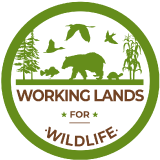-
NFPA Firewise USA
-
by
Tab Manager
—
published
Apr 13, 2021
—
last modified
Apr 18, 2024 01:24 PM
—
filed under:
Training,
Firewise,
WLFW,
Online Training,
Wildland Fire,
NFPA
Every year, devastating wildfires burn across the United States. At the same time, a growing number of people are living where wildfires are a real risk. While these fires will continue to happen, there are things you can do to protect your home and neighborhood as well as your family’s safety. The Firewise USA® program is here to help you get started.
Located in
Training
/
Online Training Programs and Materials
-
The Nature Conservancy Conservation Gateway Fire Training
-
by
Tab Manager
—
published
Dec 16, 2022
—
last modified
Apr 18, 2024 01:20 PM
—
filed under:
The Nature Conservancy,
Training,
WLFW,
Online Training,
TNC,
Wildland Fire
The Nature Conservancy has conducted over 100 fire training sessions since 1986. Having served more than 3,700 students to date, the Conservancy has earned a reputation for its innovative, experiential approach to learning and dynamic, interagency cadre and student bodies.
Located in
Training
/
Online Training Programs and Materials
-
Southern Fire Exchange Publications
-
by
Tab Manager
—
published
Apr 11, 2021
—
filed under:
Wildland Fire,
Southern Fire Exchange,
SFE,
Training Publication,
Fact Sheet
The Southern Fire Exchange disseminates fire research results and information through fact sheets, the Fire Lines newsletter, presentations, and research syntheses. The topics covered in SFE products are identified through needs assessments, surveys, and by the SFE Advisory Board. SFE also works with partners to identify critical fire science research needs for the Southern region.
Located in
Training
/
Publications, fact sheets, training materials
-
Joint Fire Science Program Fire Science Exchange Network
-
by
Tab Manager
—
published
Apr 11, 2021
—
last modified
Apr 11, 2021 10:52 PM
—
filed under:
Wildland Fire,
Training Publication,
Fact Sheet,
FireScience.gov
The Joint Fire Science Program (JFSP) Fire Science
Exchange Network is a national collaboration of 15 regional
fire science exchanges that provides the most relevant,
current wildland fire science information to federal, state,
local, tribal, and private stakeholders within ecologically
similar regions. The network brings fire managers,
practitioners, and scientists together to address regional fire
management needs and challenges.
Located in
Training
/
Publications, fact sheets, training materials
-
Consortium of Appalachian Fire Managers & Scientists
-
by
Tab Manager
—
published
Apr 11, 2021
—
filed under:
FireScience.gov,
Wildland Fire,
CAFMS,
Training Publication,
Consortium of Appalachian Fire Managers & Scientists
The Consortium of Appalachian Fire Managers & Scientists (CAFMS) is one of 15 knowledge exchange networks supported by the Joint Fire Science Program. Our goal is to promote communication among fire managers and scientists in the Appalachian Mountains region. CAFMS is largely successful because of a strong relationship between the U.S. Forest Service Southern Research Stations and The Nature Conservancy's Fire Learning Network
Located in
Training
/
Publications, fact sheets, training materials
-
Great Plains Fire Science Exchange Publications
-
by
Tab Manager
—
published
Apr 11, 2021
—
last modified
Apr 11, 2021 10:52 PM
—
filed under:
Wildland Fire,
Training Publication,
Great Plains Fire Science Exchange,
FireScience.gov
Publications from the Great Plains Fire Science Exchange.
Located in
Training
/
Publications, fact sheets, training materials
-
Oak Woodlands & Forests Fire Consortium Research Briefs
-
by
Tab Manager
—
published
Apr 11, 2021
—
filed under:
Wildland Fire,
Training Publication,
Oak Woodlands & Forests Fire Consortium,
FireScience.gov
The Oak Woodlands & Forests Fire Consortium is an exchange for fire science information. Funded by the Joint Fire Science Program, our goal is to increase the availability and consideration of credible fire science information to those making land management decisions.
Located in
Training
/
Publications, fact sheets, training materials
-
EPA Wildland Fire Publications, Fact Sheets and Other Resources
-
by
Tab Manager
—
published
Apr 11, 2021
—
last modified
Apr 11, 2021 10:52 PM
—
filed under:
Wildland Fire,
Environmental Protection Agency,
FireScience.gov,
Training Publication,
EPA
This page provides guides, fact sheets, brochures, infographics and web resources for use in learning about the health impacts of wildland fire smoke.
Located in
Training
/
Publications, fact sheets, training materials
-
The Nature Conservancy Private Lands Conservation
-
by
Tab Manager
—
published
Feb 18, 2023
—
last modified
May 29, 2025 05:59 PM
—
filed under:
Landowner Resources,
The Nature Conservancy,
WLFW,
Resources,
TNC,
Working Lands for Wildlife,
Landowner Information,
Private Lands
The Nature Conservancy works to establish local groups that can protect land. Private lands conservation is an innovative tactic that leverages the increasing interest of the private sector to take part in conservation. TNC works with landowners, communities, cooperatives and businesses to establish local groups that can protect land. Some of the main tools used to achieve these goals include land trusts, conservation easements, private reserves and incentives.
Located in
Landowner Information
/
Landowner Resources
-
Defenders of Wildlife Private Lands Conservation
-
by
Tab Manager
—
published
Feb 18, 2023
—
last modified
May 29, 2025 05:58 PM
—
filed under:
Landowner Resources,
WLFW,
Defenders of Wildlife,
Landowner Information,
Working Lands for Wildlife,
Resources
Defenders works with private landowners, land trusts and other partners to communicate, educate and apply conservation and restoration techniques on the ground habitat to advance species recovery and wildlife coexistence on private lands nationwide.
Located in
Landowner Information
/
Landowner Resources


